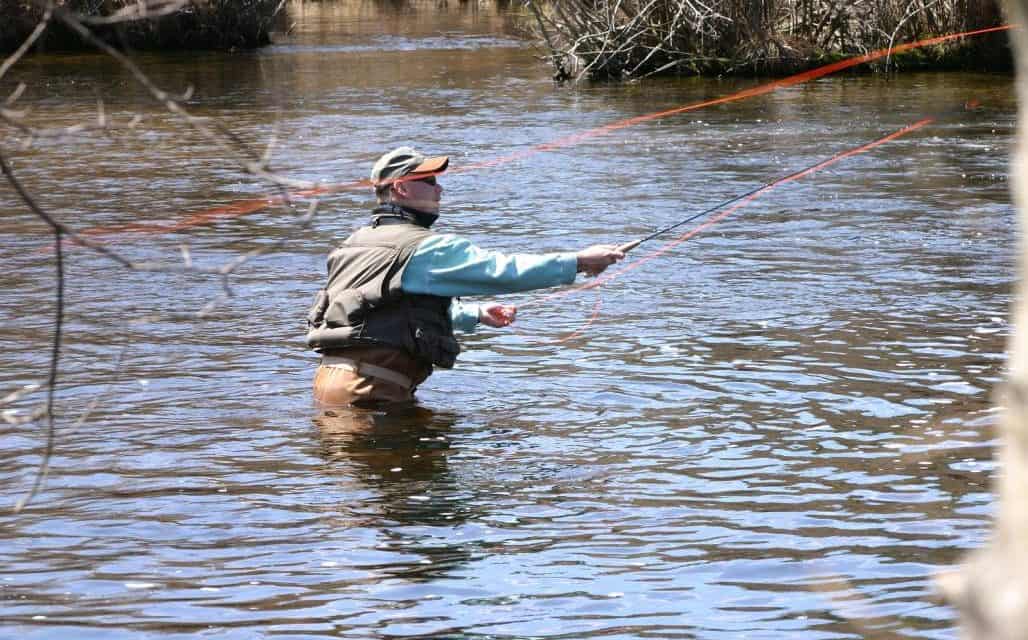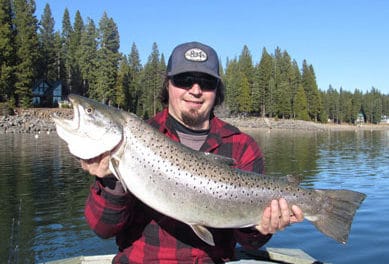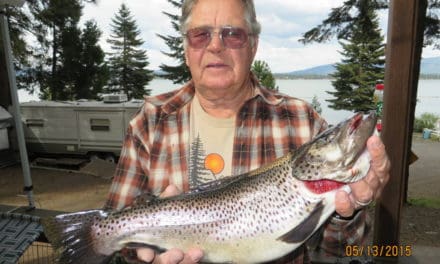Fly Fishing Casting Basics
Courtesy of Takemefishing.org
[media-credit name=”bigstockphoto” align=”alignleft” width=”300″] [/media-credit]
[/media-credit]
In spin casting, the weight of the lure pulls the line off the reel. In fly casting, the weight of the line carries the fly to the fish. In fly casting, you must learn to use the fly rod to cast the weight of the fly line. You can do that quickly by following five basic principles of good fly casting:
• 1) The fly line (and fly) goes in the direction you point the fly rod tip during the cast.
• 2) Good fly casting is not strength-related; it is timing-related. You need to practice the timing of the cast to become a good caster. It takes 15 minutes a day for about a month to become a good fly caster.
• 3) Proper stroking and stopping of the fly rod are fundamental to good fly casting. The caster loads energy into the fly rod during the casting stroke. The fly rod releases the energy into the fly line in the cast. The fly caster loads a little energy (a short, low-energy stroke) into the top of the fly rod for short casts; he loads a lot of energy (a short, powerful stroke) into the middle and bottom of the fly rod for a long cast.
• 4) Casting arcs (the arc the rod makes in the air during the cast) in fly fishing are small for short casts and large for long casts.
• 5) Stopping the fly rod after the casting stroke is critical to forming the casting loop, and it allows the fly rod to unload, thereby casting the line.
Fly fishermen seldom need to cast more than 50 feet when fishing, but becoming proficient at long-distance fly casting can improve all your casting. You should learn to cast short (30 feet) first, and then practice at greater and greater distances.
You can’t learn fly casting from a book. You need to just do it. The more you practice, the better you’ll become. Practice on a lawn or pool. Casting while fly fishing is not practice. Practice allows you to focus on casting fundamentals without distractions.
Getting Started
The best way to learn fly casting is from an expert instructor. If one is not available, take your balanced fly rod, fly reel and fly line to your backyard. You’ll need at least 120 feet (60 feet in each direction) of lawn with no overhead obstructions.
Mark your fly line with an indelible marker at 30 feet. The marker will indicate how much line you have out when you cast. Also place hats or some other objects on the lawn 30 and 60 feet from where you will stand. The markers will help you develop the sense of distance that is critical in casting accurately to fly fish.
The Grip
Grasp the fly rod firmly with your casting hand and place your thumb on top of the rod grip. When you are learning to cast, keep the fly rod butt under and in line with your wrist and forearm. That way, the rod will remain in plane during your cast. If the fly rod comes out of plane during the cast, the tip wanders and the fly line follows the tip, wandering and spoiling the cast. Stand on the lawn with your feet slightly apart. Thread the line off the reel and up through the line guides and out the tip top of the fly rod. Tie a 9-foot leader to the end of the fly line using the tube knot and tie a small piece of yarn to the end of the fly tippet. Pull about 20 feet of line off the fly reel and lay it out on the lawn to the right of where you stand (to the left if you are left-handed). Make sure the fly line is drawn tight on the lawn and is not lying in S-curves or it will not cast well.
Using a horizontal side-arm cast, flick the fly rod tip forward from your right to your left (from your left to your right if you are left-handed), and watch the fly line form a loop and roll out to your left and then settle to the grass.
Using your arm and a flick of your wrist together (the way you’d throw a Frisbee backward and a baseball forward), cast the fly line repeatedly back and forth in backcasts and forward casts. Try to make the line form candy cane-shaped loops in both your backcasts and forward casts. Loop formation is the intent of your fly casting – the tighter the loops, the better the cast.
As you stroke the rod back and forth, keep a firm wrist and stop the fly rod abruptly after each stroke. Stopping the rod allows the fly line to form a loop off the rod tip. It also allows the fly rod’s tip to turn over to unload energy into the fly line efficiently. The energy in the fly rod casts the line. You must stop the rod when making both the forward cast and the backcast to become a good fly fishing caster.
After casting sidearm for 15 minutes, or until you feel comfortable with the feel of the fly line and fly rod, try casting the rod at a 45-degree angle and then vertically. You’ll use all these casting positions when you are fly fishing, so get used to them. You want to groove your casting stroke in the position that is most comfortable for you: sidearm, 45 degrees or vertical. The fly fishing casting principles remain the same for all casting positions. The sidearm cast allows you to watch the line and thus to teach yourself timing and loop formation.
Aiming the Cast
For short casts, you aim about 4 feet above the water (or lawn). As your casts get longer, aim higher to allow the line and fly more time to reach the target. Learning to aim accurately is a hallmark of expert fly casting. Practice makes perfect, so practice.












